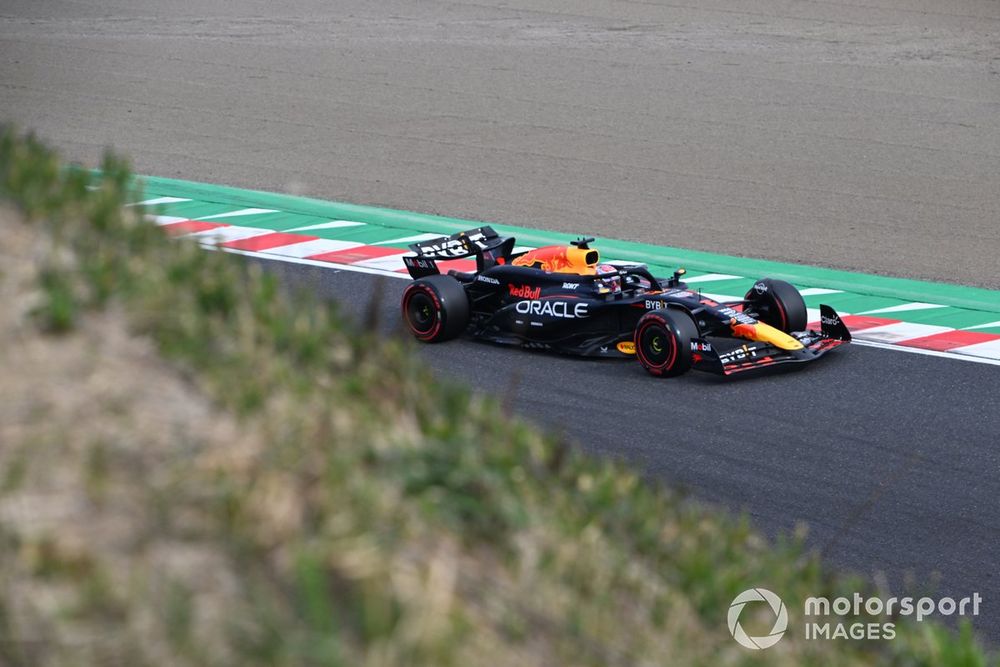As the FIA continues its efforts to finalise the new car regulations from 2026, Motorsport.com revealed earlier this week that some alarming simulator findings have prompted a rethink about how the active aero elements of the new F1 challengers will work.
Whereas initial investigations focused on only having the rear wing as a moveable element, it has now been decided that the front wing will also need to be adjustable for aero-balance reasons.
This move was triggered by simulator runs highlighting that there was a high risk of cars spinning when the rear wing was in low-drag mode.
Verstappen thinks that F1 is looking in the wrong direction though in chasing complex elements like active aero, and instead says bigger improvements could come if there was a big push to bring down car weight.
Asked by Motorsport.com for his thoughts on the 2026 plans, Verstappen said: “With the potential like active aero and stuff, I’m not sure if we should head into that direction, but that’s what it’s looking like at the moment. Hopefully, we can optimise all these kinds of things.
“For me, it’s more important to just try and fight the weight of the cars, try and optimise that instead of all these tools and tricks to try and help the overtaking or following. There must be different ways to be able to do it.”
Photo by: Mark Sutton
The moveable aero element has become essential because the 2026 car designs need to compensate for the unique performance characteristics of the new power units.
The planned 50/50 split between the internal combustion engine and battery means that power will be down overall and could run out at the end of straights.
This is why the FIA wants the wings to run in a high-downforce configuration in corners to help produce downforce while then switching to low drag on the straights for better straightline speed.
Verstappen added: “With the engine regulation that they went into, they kind of need to do that to create the top speed where the battery stops deploying and stuff.
“Some tracks will work a bit better, and some tracks probably it’s a bit more on the edge.
“Of course, people will try to counter my arguments, but I guess we’ll find out anyway in ’26.”
Ferrari’s Carlos Sainz backed Verstappen’s scepticism about the active aero element of the 2026 cars, as he said things looked like they had got overly complicated.
“I think it’s all a consequence of the engine regulations,” he said….
Click Here to Read the Full Original Article at Motorsport.com – Formula 1 – Stories…

